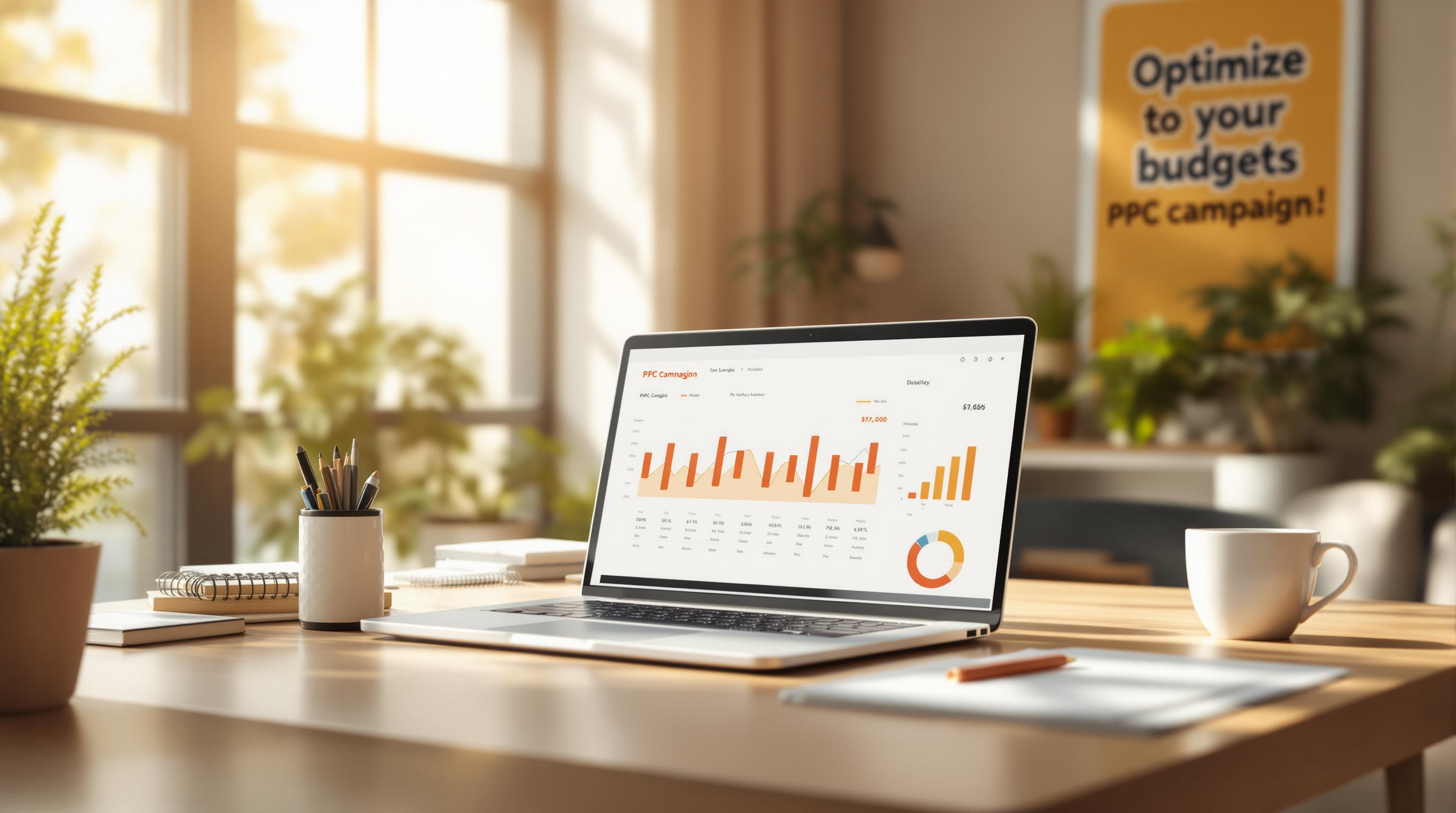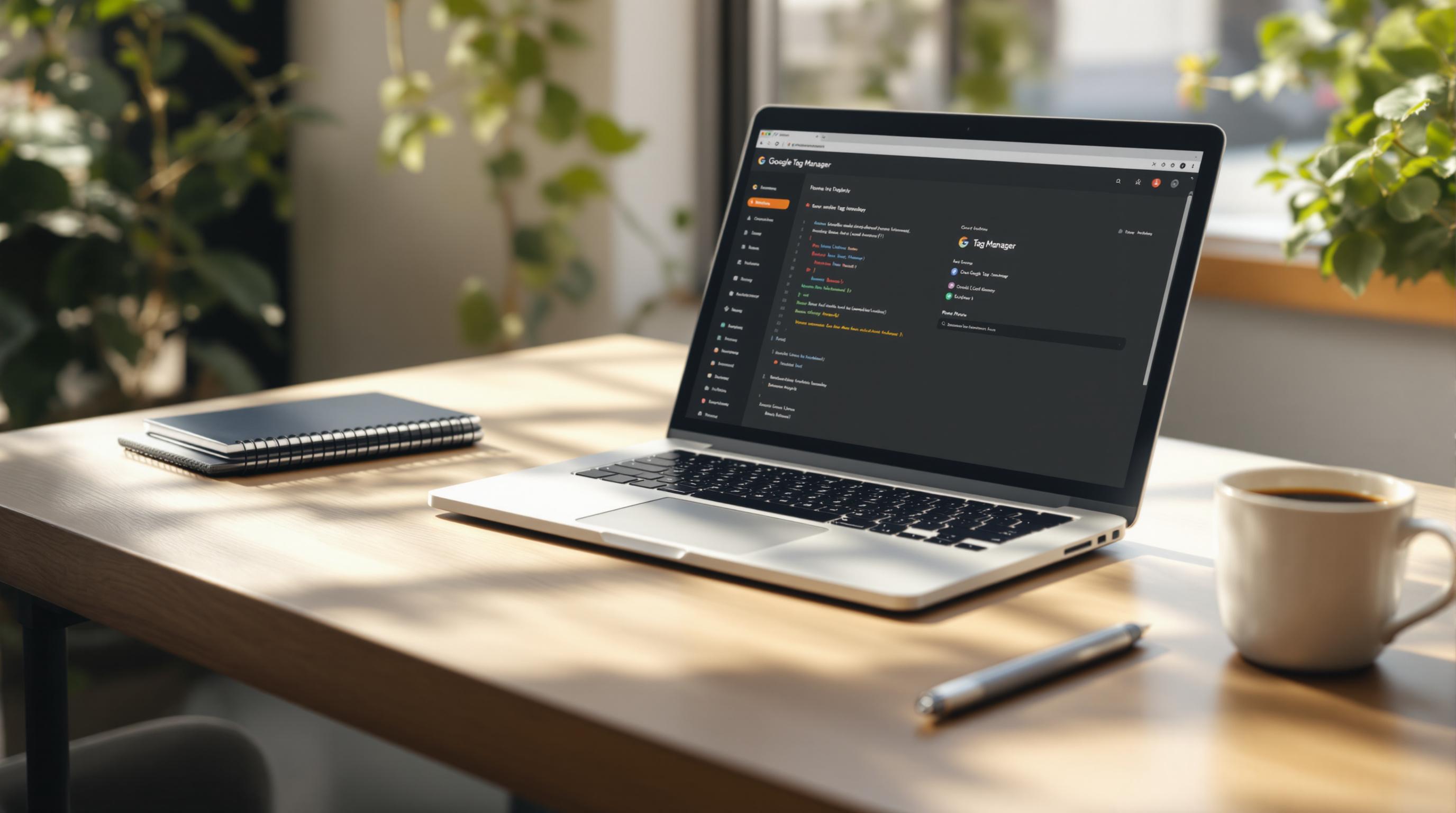Ad scheduling, or dayparting, lets you control when your ads appear, ensuring they reach your audience at the best times. For example, B2B ads work better on weekdays, while consumer-focused ads might perform best on weekends. Here’s what you need to know:
- Google Ads Native Scheduling: Free, simple to use, and allows scheduling by days and hours. However, it’s limited to your account’s time zone and lacks advanced automation.
- Third-Party Tools (e.g., AdEspresso, Optmyzr): Offer AI-driven optimization, multi-platform support, and advanced analytics. These tools are better for complex campaigns but come with subscription costs.
- Top PPC Marketing Directory: A resource to compare tools based on features, automation, and pricing.
Quick Comparison
| Feature | Google Ads Native Scheduling | Third-Party Tools |
|---|---|---|
| Cost | Free | $49–$299/month |
| Automation | Basic | AI-driven optimization |
| Time Zone Support | Fixed to account zone | Automatic adjustments |
| Platform Support | Google Ads only | Multi-platform |
Key Takeaway: Use Google Ads' native tools for simple campaigns. For multi-time-zone or cross-platform campaigns, third-party tools are worth considering despite the cost.
1. Google Ads Native Scheduling

Features and Capabilities
Google Ads Native Scheduling gives advertisers detailed control over when their ads appear. Campaigns can run continuously around the clock or be limited to as little as 15 minutes per week, depending on the strategy [1]. You can schedule ads by specific days and hours and adjust bids to focus on the most impactful time periods.
Time Zone Management
Handling time zones is a key part of Google Ads Native Scheduling. The platform lets you set ad schedules based on your audience's time zone. However, managing campaigns across multiple time zones can be tricky and may require additional adjustments [2].
"Ad scheduling can be complex when dealing with multiple time zones, requiring advertisers to extend their ad schedule to accommodate both zones" [2].
Cost and Accessibility
This scheduling tool is available at no extra cost and is user-friendly for advertisers of all skill levels [4]. It integrates smoothly with other Google Ads features like conversion tracking and Google Analytics, making campaign management easier [1].
That said, if you're looking for more advanced automation or tools that work across multiple platforms, third-party options might be a better fit. These alternatives can offer greater flexibility and automation for more intricate advertising strategies.
Google Ads Ad Scheduling
2. Third-Party Ad Scheduling Tools
Google Ads' native scheduling is a solid starting point, but third-party tools can elevate your ad timing game with more advanced features and integration across multiple platforms.
Features and Capabilities
Third-party tools like AdEspresso and WordStream bring more to the table with AI-driven scheduling that analyzes historical data to optimize ad timing. Optmyzr, on the other hand, lets you set custom rules and use a variety of performance indicators for precise control. These tools are a great choice if Google Ads' built-in options feel too limiting for complex or multi-platform campaigns.
Time Zone Management
Managing international campaigns? Third-party platforms simplify this with automatic time zone detection and adjustments, saving you the hassle of manual configuration.
| Feature | Google Ads Native | Third-Party Tools |
|---|---|---|
| Schedule Granularity | Campaign level | Ad group and extension level |
| Automation Capabilities | Limited | AI-driven optimization |
| Cross-Platform Support | Google Ads only | Works across multiple platforms |
Cost and Accessibility
These tools aren’t free, but they offer flexibility for different budgets. AdEspresso starts at $49/month, while WordStream begins at $299/month. Both offer free trials, so you can explore their advanced scheduling features before committing. If you're managing campaigns across time zones or need more automation, these tools can be a worthwhile investment.
Want more options? Check out the Top PPC Marketing Directory for a curated list of tools to supercharge your campaigns.
sbb-itb-89b8f36
3. Top PPC Marketing Directory
Features and Capabilities
The Top PPC Marketing Directory is a go-to resource for discovering ad scheduling tools tailored to specific needs. It organizes tools based on features like dayparting and automation, making it simple for marketers to evaluate and compare options.
You can filter tools by features such as:
| Feature Category | Available Options |
|---|---|
| Campaign Management | Basic scheduling, Advanced dayparting, Custom rules |
| Automation Level | Manual control, Semi-automated, Fully automated |
| Integration Capabilities | Single platform, Multi-platform, API access |
| Performance Tracking | Basic metrics, Advanced analytics, Custom reporting |
Cost and Accessibility
The directory includes tools priced from $50/month for basic options to enterprise-level platforms with custom pricing. It also provides details on free trials, onboarding processes, and pricing tiers to simplify decision-making. Listings marked as Featured or Premium showcase top solutions, offering insights into integration options, customer support, and real user feedback.
Designed to complement tools like AdEspresso and Optmyzr, this directory acts as a centralized hub for comparing scheduling tools. It helps advertisers assess practical features and find solutions that align with their campaign goals and scheduling requirements.
Pros and Cons
When choosing ad scheduling tools for Google Ads, it's essential to weigh their strengths and limitations to select the right fit for your campaigns.
Google Ads Native Scheduling
Google's built-in scheduling tool is known for its easy integration and simple interface, making it a good option for straightforward campaigns. However, it has a major drawback: the time zone setting is fixed to the account's time zone and cannot be changed after setup [2].
For advertisers running more complex campaigns, this limitation may lead them to explore third-party tools that offer greater flexibility and precision.
Third-Party Ad Scheduling Tools
Third-party tools expand on Google's capabilities by offering features like automation and cross-platform management. Here's how they compare:
| Feature | Google Ads Native | Third-Party Tools |
|---|---|---|
| Time Zone Support | Fixed to account zone | Adjusts automatically across zones |
| Automation Level | Basic scheduling | Advanced rules and AI-driven optimization |
| Analytics | Standard reporting | In-depth performance insights |
| Cost | Free with platform | Requires a subscription |
Performance Impact
Smart scheduling can cut down on wasted ad spend and improve visibility during high-traffic times [4]. For instance, ads targeting professionals during weekday work hours often lead to better ROI [2].
Key Considerations
When deciding between native and third-party scheduling tools, consider these factors:
- Campaign Needs: How complex is your campaign? Do you need multi-time-zone support?
- Budget and Resources: Can you justify the cost of third-party tools with the potential performance improvements?
- Reporting Requirements: Do you need basic reporting, or will advanced analytics help you achieve your goals?
For businesses operating in multiple time zones or managing intricate campaigns, third-party tools can often offset their cost by delivering more precise targeting and reducing wasted ad spend [2][3].
Conclusion
Deciding between native and third-party ad scheduling tools depends on the complexity of your campaigns and the specific needs of your business. These tools can range from simple time-based controls to advanced automation, addressing a variety of advertiser demands.
For Small to Medium Businesses
Google Ads' native scheduling works well for straightforward campaigns. It’s easy to use, integrates seamlessly, and is cost-free - perfect for single-platform or single-time-zone advertisers.
For Larger or More Complex Campaigns
Third-party tools are better suited for managing multi-platform campaigns, adjusting for time zones automatically, and offering advanced analytics. While these tools often require a financial investment, they bring key benefits, such as:
| Business Need | Key Benefit |
|---|---|
| Managing Multiple Time Zones | Automatic time zone adjustments |
| Handling Complex Campaigns | AI-powered optimization and rules |
| Analyzing Performance | Detailed analytics and insights |
| Coordinating Cross-platform Ads | Unified control across platforms |
How to Choose the Right Tool
When deciding on an ad scheduling tool, keep these factors in mind:
- Campaign Size: Are you advertising on one platform or several?
- Audience Location: Are you targeting a local or international audience?
- Budget: How much can you allocate for additional tools?
- Features Needed: Do you require basic scheduling or advanced automation?
For advertisers seeking more guidance, platforms like the Top PPC Marketing Directory can help compare and evaluate tools tailored to your campaign needs. This simplifies the decision-making process.
FAQs
What is dayparting in Google Ads?
Dayparting lets advertisers schedule their ads to run during specific days and times, helping to focus on periods with the highest engagement. For example, B2B campaigns often perform better during standard business hours (9 AM to 5 PM on weekdays), while ads targeting consumers might get more traction on weekends. This approach ensures ad budgets are used effectively by focusing on times when audiences are most active [2].
For businesses running global campaigns or needing more complex scheduling, tools like Optmyzr can help. These tools offer advanced automation and better time zone management, making them especially useful for campaigns spanning multiple regions [3].
"Ad scheduling can impact Google Ads budgeting and bidding by allowing advertisers to allocate their budget more efficiently by showing ads during specific times when they are most profitable."[4]
Pro Tip: Analyze your historical performance data regularly - monthly is a good starting point - to pinpoint and adjust for peak conversion times.
If you're looking for more advanced dayparting options, check out the third-party tools mentioned earlier in this article. Many of these tools are listed in the Top PPC Marketing Directory.


